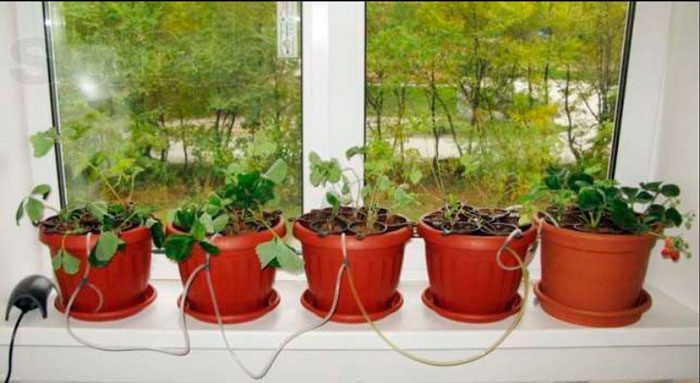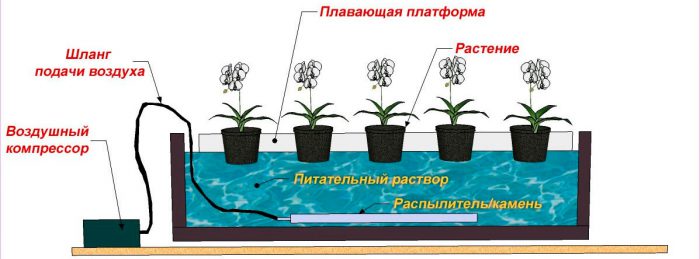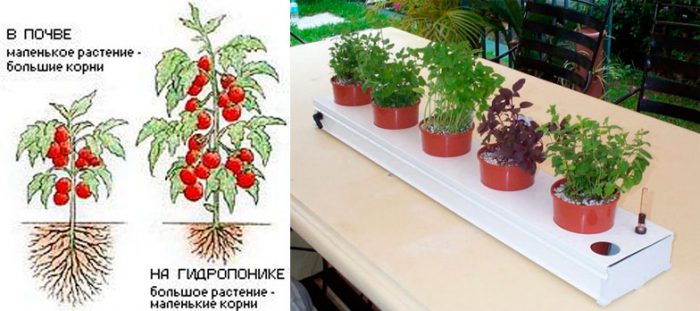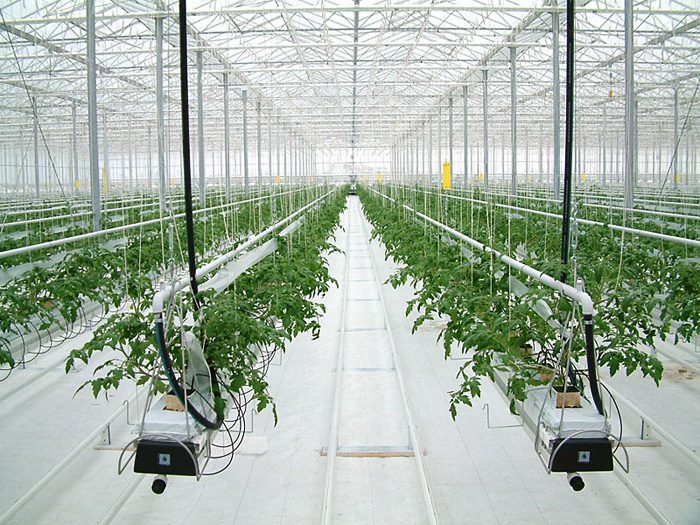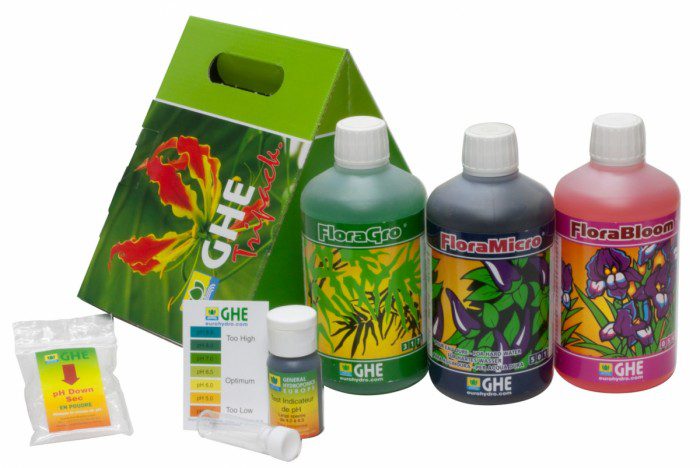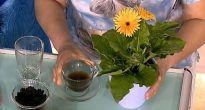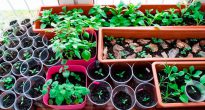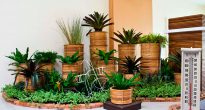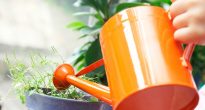Hydroponics - a modern way of growing plants in special solutions. Translated from Greek, the term hydroponics literally means "working solution". When using this method, plants do without soil, are in a substrate that serves as a support for the root system and receive the necessary nutrients from the solution. It is selected individually for each plant, depending on the species.
They began to use the soilless method of growing plants in ancient times. The Hanging Gardens in Babylon are the first successful attempt at hydroponics. The Aztec Floating Gardens in Central America used the same technology. When warlike neighbors drove out the Nomad Indians living on the shores of Lake Tenochitlan in Mexico, they invented their own method of growing vegetables and fruits. The Aztecs built cane rafts and covered them with silt from the bottom of the lake, growing fruit trees and vegetables.
Before hydroponics was introduced, scientists were researching how the plant feeds. In the course of growing plants in water, they determined what nutrients the root was extracting. It has been found that the plant needs minerals for normal growth and development. Potassium promotes plant growth. Thanks to calcium, the root system is formed. Magnesium and iron are involved in the formation of chlorophyll. Sulfur and phosphorus serve to form the nucleus and protoplasm.
Content
Benefits
Hydroponics has several advantages over the traditional method of growing plants.
- The plant receives its entire supply of nutrients in the required quantity. This contributes to its rapid growth and development. Plants grown in this way are in good health. Fruit trees give a good harvest, and ornamental plants please with abundant and long flowering.
- .When growing plants without soil, you can forget about such a problem as drying out and waterlogging of the soil.
- Thanks to water flow control the number of waterings is reduced... You can forget about daily watering by choosing the necessary capacity and growing system. Depending on the size of the hydroponic vessel, watering is reduced from twice a week to once a month.
- The plant receives the exact amount of fertilizer... No need to worry about how much you need to deposit.
- No need to use pesticides... A hydroponically grown plant is resistant to soil pests, root rot and fungal diseases.
- Transplanting a plant is easy and simple... The roots are not injured during transplantation, they do not need to be freed from the ground. It is enough to transfer the plant into another container by adding a solution.
- Hydroponics is an economical way to grow indoor plants... They do not need an earthen substrate that needs to be changed annually. Formulas and specialty equipment are affordable for most people.
- The earth tends to accumulate harmful substances that threaten human life (radionuclides, nitrates, heavy metals, poisons). In soilless cultivation, the plant only assimilates what it needs. Fruit plants will be environmentally friendly and safe... In terms of taste, they are in no way inferior to plants grown in the traditional way.
- Growing plants hydroponically is not only economical but also pleasant... Do not get your hands dirty, as when working with the ground. In addition, hydroponic vessels are lightweight and compact. The green corner in the house will look neat, there will be no extraneous odors and debris.
Do not pay attention to the stereotypes that have developed over the centuries that a plant can only be grown in the ground. This is not an artificial method using pesticides. The hydroponics method is completely safe.
Hydroponics made easy
Having mastered the basic concepts, you can start growing plants. This method does not require much labor. It will be much easier to take care of indoor flowers. Especially if you use automated circulation systems, which in some cases can be assembled by yourself. You can make your life easier by reducing the amount of watering and fertilizing.
Hydroponics is inexpensive
To make a hydroponic vessel, you will need an ordinary plastic pot and any suitable larger container. The main thing is that it does not allow light to pass through, contains a certain amount of water and is chemically inert. A regular paper bag for milk or juice, intended for long-term storage, will do. From the side of the seam, a hole is cut in it for the pot. The container is turned on its side. The pot with the substrate is immersed in the solution for 1-2 centimeters.
The composition of the substrate should include vermiculite, perlite, expanded clay, mineral wool, coconut fiber. We should not forget about the inert chemical fiber, which can be used as foam rubber, nylon, nylon or polypropylene threads. These materials will cost no more than potting soil. If the soil needs to be changed every year when replanting, then the hydroponic substrate will last for several years.
To grow one small plant, you need to prepare one liter of nutrient solution. The concentrate is designed for 50 liters of hydroponic solution. Thanks to it, you can take care of 50 plants per year or stretch the liquid for 50 years.
What plants can be grown hydroponically?
The hydroponic method can be applied to most plants grown by seed or cuttings. When transplanting adult specimens, it is better to take plants with thick and coarse roots. They should be well cleared of the ground. Hydroponics is not carried out if the plants have a delicate root system.
Plant transplant rules
To transplant a plant into hydroponics, it must be removed from the pot and soaked with an earthen ball in a bucket of room temperature water. After several hours, the soil is carefully separated from the roots. Then the roots are washed under a light stream of water. The peeled roots are straightened down and covered with a special substrate, holding the plant. It should not touch the roots of the water layer.The solution will rise through the capillaries of the substrate, so the roots will reach the required depth. After transplanting, the hydroponic substrate is watered with plain water, the vessel is filled. In order for the plant to adapt to the new conditions of detention, it is left for a week. When it comes to an end, the water is replaced with a solution. You cannot fill it right away.
Basic concepts of hydroponics
Solution concentration
The concentration of the solution is selected according to the manufacturer's recommendations. The volume of the solution in the hydroponic vessel must be kept at the same level. This can be done by regularly adding plain water there. It is very important that it is soft (settled or filtered). According to the manufacturer's instructions, the solution is completely replaced every three months. For insectivorous plants and epiphytes, a solution is prepared with a lower concentration of 2-4 times. Fast-growing plants need to increase the concentration of the nutrient solution by 1.5 times. Annual vegetable crops prefer a concentration that is 1.25 times higher than the average. In the cold season, the concentration of the solution is reduced by 2-3 times. It is equally important to lower the water level.
Solution acidity (pH)
5.6 is the optimal pH for most plants. As a rule, all hydroponic formulations are close to this figure. The required size is selected depending on the type of plant. PH 5.6 is not suitable for all plants. Gardenias and azaleas prefer a more acidic environment (pH = 5). An alkaline environment (pH = 7) is suitable for palms. An electronic pH meter is used to determine the pH. This device shows accurate values, but not everyone can handle it. Moreover, it is very expensive. Better to use special acidity tests that are designed for aquariums. They can be purchased at specialized zoological stores. They are accurate and easy to use. Universal indicator strips are not worth buying. They have a large margin of error.
How to prepare a hydroponic solution
A hydroponic solution consists of two ingredients. To determine the exact dosage, a medical five-cubic syringe is used. The first component of the solution is a complex fertilizer (1.67 ml). There are two types of fertilizers that can be used. Uniflor Bud is suitable for fruit crops and flowering plants. For other species it is better to take "Uniflor Growth", which promotes the growth of the green part of the plant. Fertilizer is diluted in one liter of water.
The second ingredient for preparing a hydroponic solution is a 25% calcium nitrate solution (2 ml). He prepares simply. 250 grams of four-water calcium nitrate is diluted in a liter of water. This amount of nitrate is used for soft water. For example, distilled or tap Petersburg with a concentration of 100 mg / l. If the water is hard, the amount of calcium nitrate is selected differently.
Just two simple ingredients and you get a solution of normal concentration (1 liter).
How to prepare a solution - Video
Hydroponics from scrap materials - Video
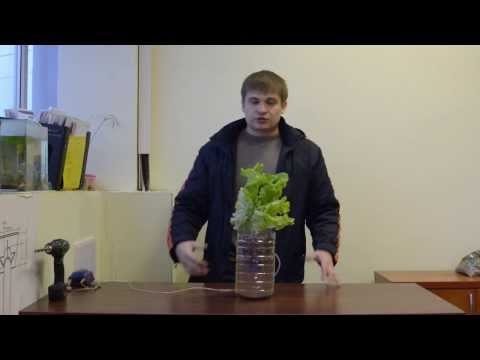

Watch this video on YouTube
A more difficult option for more plants - Video


Watch this video on YouTube

